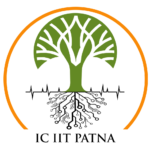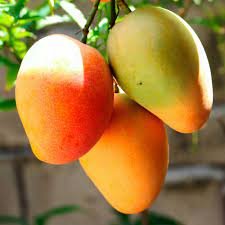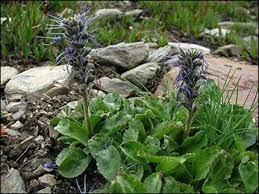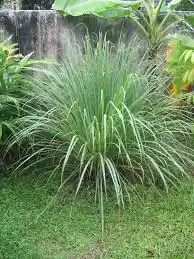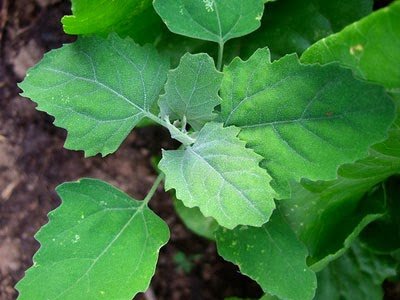Mustard (Brassica spp.) Nutrition Requirements
Nutrition required by Mustard (Brassica spp.) at each stage of its life cycle.
SOIL PREPARATION
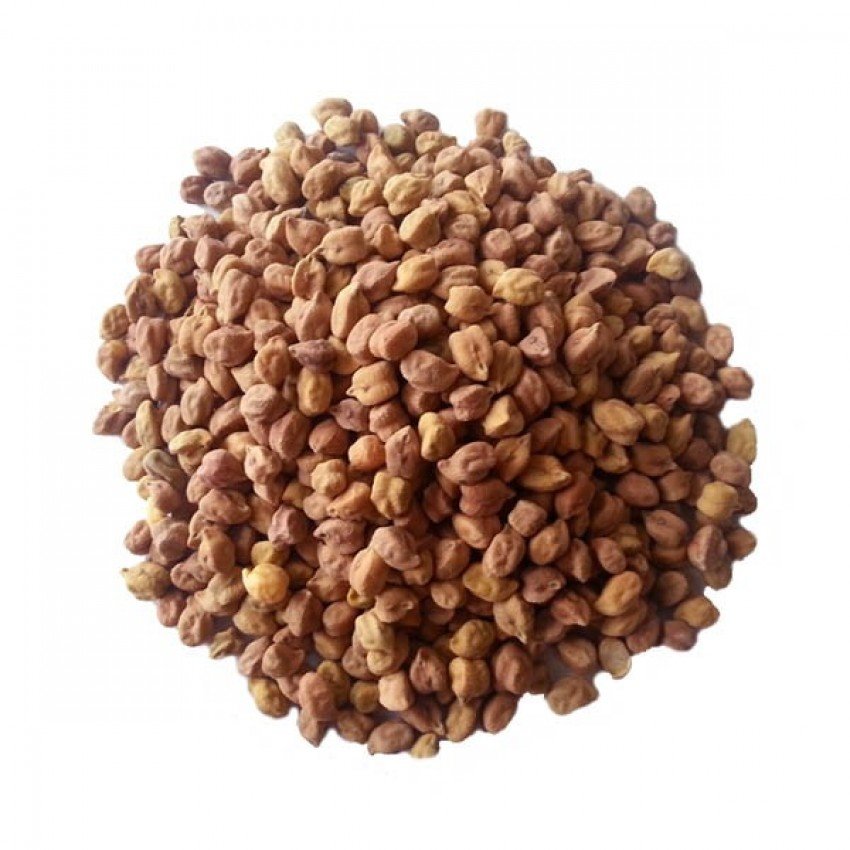
Soil Preparation
Soil preparation is crucial for mustard cultivation as it directly influences the growth, development, and yield of the crop.
Here's a soil preparation method and nutrition requirement for mustard:
**Soil Preparation Method:**
1. **Site Selection:**
Choose a well-drained and sunny location for mustard cultivation.
2. **Soil Testing:**
Conduct soil testing to determine soil pH and nutrient levels. Mustard thrives in slightly acidic to neutral soils with a pH range of 6.0 to 7.5.
3. **Soil Amendments:**
Based on soil test results, amend the soil with organic matter such as compost, well-rotted manure, or vermicompost to improve soil structure, fertility, and moisture retention.
4. **Soil Tillage:**
Prepare the soil by plowing or tilling to a depth of 8 to 10 inches to break up compacted soil, improve aeration, and facilitate root growth.
5. **Soil Leveling:**
After plowing, level the soil surface using a harrow or rake to create a uniform seedbed.
6. **Weed Control:**
Remove any existing weeds or weed roots from the soil to minimize weed competition with mustard plants.
7. **Seedbed Preparation:**
Create rows or raised beds for planting mustard seeds. The spacing between rows and plants depends on the mustard variety and local growing conditions.
**Nutrition Requirement:**
1. **Nitrogen (N):**
Mustard requires a significant amount of nitrogen for vegetative growth and yield. The recommended nitrogen application varies depending on soil fertility and crop stage but typically ranges from 50 to 100 kg/ha.
2. **Phosphorus (P):**
Phosphorus is essential for root development, flowering, and seed formation in mustard. Apply phosphorus fertilizer based on soil test recommendations, typically around 40 to 60 kg/ha of P2O5.
3. **Potassium (K):**
Potassium is important for overall plant vigor, disease resistance, and seed quality. Apply potassium fertilizer based on soil test recommendations, typically around 20 to 40 kg/ha of K2O.
4. **Micronutrients:**
Mustard may require micronutrients such as boron, zinc, and manganese for optimal growth and development. Apply micronutrient fertilizers as needed based on soil test recommendations or deficiency symptoms.
5. **Organic Matter:**
Incorporating organic matter into the soil during soil preparation provides essential nutrients, improves soil structure, and enhances water retention capacity.
6. **pH Adjustment:**
If soil pH is outside the optimal range for mustard cultivation, amend the soil with lime to adjust pH levels. Mustard prefers slightly acidic to neutral soil conditions.
7. **Fertilizer Application:**
Apply fertilizers based on soil test recommendations and crop nutrient requirements. Split nitrogen application into multiple doses during the crop's growth stages for efficient nutrient uptake.
By following these soil preparation methods and providing the necessary nutrients, you can optimize soil conditions for mustard cultivation, promote healthy plant growth, and achieve higher yields. Regular soil testing and proper nutrient management are essential for sustainable mustard production.
Early Growth (Germination to Establishment)

Early Growth
During the early growth stage (germination to establishment) of mustard, the crop has specific nutritional requirements to support vigorous vegetative growth and establish a healthy root system.
Here are the key nutrients and their requirements for mustard during this stage:
1. **Nitrogen (N):**
Nitrogen is crucial for early growth and vegetative development in mustard. It promotes leaf and stem growth, enhances chlorophyll production, and supports overall plant vigor. The recommended nitrogen application during the early growth stage of mustard is typically around 20 to 30 kg/ha.
2. **Phosphorus (P):**
Phosphorus is essential for root development, energy transfer, and early growth stages in mustard. Adequate phosphorus availability promotes strong root establishment and helps the plant withstand stress conditions. The recommended phosphorus application during the early growth stage of mustard is typically around 10 to 15 kg/ha of P2O5.
3. **Potassium (K):**
Potassium plays a vital role in water uptake, osmoregulation, and enzyme activation during the early growth stage of mustard. It supports cell expansion, improves drought tolerance, and enhances overall plant health. The recommended potassium application during the early growth stage of mustard is typically around 10 to 15 kg/ha of K2O.
4. **Micronutrients:**
Micronutrients such as boron, zinc, manganese, and iron are essential for various physiological processes in mustard plants during the early growth stage. They facilitate enzyme activation, hormone synthesis, and nutrient uptake. Apply micronutrient fertilizers as needed based on soil test recommendations or deficiency symptoms.
5. **Sulfur (S):**
Sulfur is essential for mustard plants' early growth, as it is a component of amino acids, proteins, and enzymes. It contributes to chlorophyll synthesis, root development, and overall plant metabolism. The recommended sulfur application during the early growth stage of mustard is typically around 10 to 15 kg/ha.
6. **Calcium (Ca) and Magnesium (Mg):**
Calcium and magnesium are secondary macronutrients required for early growth and development in mustard. They support cell division, photosynthesis, and nutrient uptake processes. Ensure adequate calcium and magnesium levels in the soil through soil amendments if deficiencies are detected.
7. **pH Adjustment:**
Mustard plants prefer slightly acidic to neutral soil conditions (pH 6.0 to 7.5) for optimal nutrient availability and uptake during the early growth stage. Adjust soil pH if necessary using lime or sulfur-based amendments to create favorable growing conditions for mustard.
By meeting these nutritional requirements during the early growth stage, you can promote robust vegetative growth, strong root development, and healthy establishment of mustard plants, setting the foundation for a successful crop cycle. Regular soil testing and proper nutrient management practices are essential for optimizing nutrient availability and achieving desired growth outcomes.
Tillering Stage (Shoot Development)

Tillering Stage
During the tillering stage (shoot development) of mustard plants, the crop has specific nutritional requirements to support vigorous vegetative growth, tiller formation, and the development of a robust canopy.
Here are the key nutrients and their requirements for mustard plants during this stage:
1. **Nitrogen (N):**
Nitrogen is essential for promoting vigorous shoot development, leaf expansion, and tiller formation in mustard plants during the tillering stage. It plays a crucial role in the synthesis of proteins, enzymes, and chlorophyll, contributing to overall plant vigor. The recommended nitrogen application during the tillering stage of mustard plants is typically around 40 to 60 kg/ha.
2. **Phosphorus (P):**
Phosphorus is vital for supporting root development, energy transfer, and metabolic processes during the tillering stage of mustard plants. Adequate phosphorus availability promotes strong root growth, nutrient uptake, and tiller formation. The recommended phosphorus application during the tillering stage of mustard plants is typically around 20 to 30 kg/ha of P2O5.
3. **Potassium (K):**
Potassium plays a crucial role in promoting shoot development, water uptake, and nutrient transport in mustard plants during the tillering stage. It enhances cell turgor pressure, osmotic regulation, and stress tolerance, contributing to robust vegetative growth. The recommended potassium application during the tillering stage of mustard plants is typically around 20 to 30 kg/ha of K2O.
4. **Sulfur (S):**
Sulfur is essential for mustard plants' tillering stage as it is a component of amino acids, proteins, and enzymes involved in plant growth and development. It contributes to chlorophyll synthesis, protein formation, and overall plant metabolism. The recommended sulfur application during the tillering stage of mustard plants is typically around 10 to 15 kg/ha.
5. **Micronutrients:**
Micronutrients such as boron, zinc, manganese, and iron are essential for supporting various physiological processes during the tillering stage of mustard plants. They facilitate enzyme activation, hormone synthesis, and nutrient uptake, contributing to optimal plant growth and development. Apply micronutrient fertilizers as needed based on soil test recommendations or deficiency symptoms.
6. **Calcium (Ca) and Magnesium (Mg):**
Calcium and magnesium are secondary macronutrients required for mustard plants' tillering stage. They support cell division, photosynthesis, and nutrient uptake processes, contributing to robust vegetative growth and tiller formation. Ensure adequate calcium and magnesium levels in the soil through soil amendments if deficiencies are detected.
7. **pH Adjustment:**
Mustard plants prefer slightly acidic to neutral soil conditions (pH 6.0 to 7.5) for optimal nutrient availability and uptake during the tillering stage. Adjust soil pH if necessary using lime or sulfur-based amendments to create favorable growing conditions for mustard.
By meeting these nutritional requirements during the tillering stage, you can promote vigorous shoot development, tiller formation, and the development of a healthy canopy in mustard plants, setting the stage for optimal yield potential. Regular soil testing and proper nutrient management practices are essential for optimizing nutrient availability and achieving desired growth outcomes.
Flowering

Flowering
During the flowering stage of mustard plants, the crop has specific nutritional requirements to support optimal flower development, pollination, and seed set.
Here are the key nutrients and their requirements for mustard plants during this stage:
1. **Nitrogen (N):**
Nitrogen is essential for supporting vigorous flower development and maintaining overall plant health during the flowering stage of mustard plants. It plays a crucial role in protein synthesis, chlorophyll production, and flower formation. The recommended nitrogen application during the flowering stage of mustard plants is typically around 40 to 60 kg/ha.
2. **Phosphorus (P):**
Phosphorus is vital for promoting flower initiation, development, and seed set in mustard plants during the flowering stage. Adequate phosphorus availability supports reproductive processes, enhances flower quality, and contributes to optimal seed production. The recommended phosphorus application during the flowering stage of mustard plants is typically around 20 to 30 kg/ha of P2O5.
3. **Potassium (K):**
Potassium plays a crucial role in supporting flower development, improving pollen viability, and enhancing fruit setting in mustard plants during the flowering stage. It regulates water uptake, osmotic balance, and enzyme activation, contributing to optimal reproductive growth. The recommended potassium application during the flowering stage of mustard plants is typically around 20 to 30 kg/ha of K2O.
4. **Calcium (Ca) and Magnesium (Mg):**
Calcium and magnesium are secondary macronutrients required for mustard plants' flowering stage. They support flower development, pollen germination, and fruit formation, contributing to successful seed set. Ensure adequate calcium and magnesium levels in the soil through soil amendments if deficiencies are detected.
5. **Sulfur (S):**
Sulfur is essential for mustard plants during the flowering stage as it is a component of amino acids, proteins, and enzymes involved in flower development and seed production. It contributes to flower coloration, pollen formation, and overall reproductive growth. The recommended sulfur application during the flowering stage of mustard plants is typically around 10 to 15 kg/ha.
6. **Micronutrients:**
Micronutrients such as boron, zinc, manganese, and iron are essential for supporting various physiological processes during the flowering stage of mustard plants. They facilitate flower development, pollen germination, and fruit set, contributing to optimal reproductive growth. Apply micronutrient fertilizers as needed based on soil test recommendations or deficiency symptoms.
7. **pH Adjustment:**
Mustard plants prefer slightly acidic to neutral soil conditions (pH 6.0 to 7.5) for optimal nutrient availability and uptake during the flowering stage. Adjust soil pH if necessary using lime or sulfur-based amendments to create favorable growing conditions for mustard.
By meeting these nutritional requirements during the flowering stage, you can promote optimal flower development, pollination, and seed set in mustard plants, ultimately leading to higher seed yields. Regular soil testing and proper nutrient management practices are essential for optimizing nutrient availability and achieving desired growth outcomes.
Matchuration & Ripening

Matchuration & Ripening
During the maturation and ripening stage of mustard plants, the crop undergoes significant physiological changes as it transitions from flower formation to seed development and ripening.
Here are the key nutrients and their requirements for mustard plants during this stage:
1. **Nitrogen (N):**
While nitrogen is essential for vegetative growth and flowering stages, its requirement decreases during the maturation and ripening stage of mustard plants. Excessive nitrogen availability during this stage can lead to delayed maturity and reduced seed quality. Reduce nitrogen application during this stage to avoid delaying the maturation process.
2. **Phosphorus (P):**
Phosphorus remains essential during the maturation and ripening stage of mustard plants, particularly for supporting seed development and maturation. Adequate phosphorus availability contributes to seed filling, quality, and overall yield. The recommended phosphorus application during the maturation and ripening stage of mustard plants is typically around 20 to 30 kg/ha of P2O5.
3. **Potassium (K):**
Potassium plays a crucial role during the maturation and ripening stage of mustard plants, supporting seed filling, and enhancing seed quality. Adequate potassium availability contributes to improved seed vigor, uniformity, and resistance to stress conditions. The recommended potassium application during the maturation and ripening stage of mustard plants is typically around 20 to 30 kg/ha of K2O.
4. **Calcium (Ca) and Magnesium (Mg):**
Calcium and magnesium are secondary macronutrients required for mustard plants' maturation and ripening stage. They contribute to seed development, maturation, and overall seed quality. Ensure adequate calcium and magnesium levels in the soil through soil amendments if deficiencies are detected.
5. **Sulfur (S):**
Sulfur remains essential during the maturation and ripening stage of mustard plants as it is a component of amino acids, proteins, and enzymes involved in seed development and maturation. Adequate sulfur availability contributes to improved seed quality, oil content, and overall yield. The recommended sulfur application during the maturation and ripening stage of mustard plants is typically around 10 to 15 kg/ha.
6. **Micronutrients:**
Micronutrients such as boron, zinc, manganese, and iron continue to play a vital role during the maturation and ripening stage of mustard plants. They facilitate various physiological processes related to seed development, maturation, and quality. Apply micronutrient fertilizers as needed based on soil test recommendations or deficiency symptoms.
7. **pH Adjustment:**
Mustard plants prefer slightly acidic to neutral soil conditions (pH 6.0 to 7.5) for optimal nutrient availability and uptake during the maturation and ripening stage. Adjust soil pH if necessary using lime or sulfur-based amendments to create favorable growing conditions for mustard.
By meeting these nutritional requirements during the maturation and ripening stage, you can promote optimal seed development, maturation, and quality in mustard plants, ultimately leading to higher seed yields. Regular soil testing and proper nutrient management practices are essential for optimizing nutrient availability and achieving desired growth outcomes.
Harvesting

Harvesting
During the harvesting stage of mustard (Brassica juncea) cultivation, there are no specific nutritional requirements as the plant is typically harvested for its seeds rather than its foliage.
However, there are certain procedures and considerations to follow to ensure a successful harvest:
1. **Timing of Harvesting:**
- Mustard seeds are usually harvested when the pods have turned yellow or brown and are beginning to dry out. At this stage, the seeds inside the pods are mature and ready for harvest.
- Harvesting should ideally be done in the early morning or late afternoon to avoid high temperatures, which can lead to seed shattering.
2. **Harvesting Method:**
- Mustard seeds are typically harvested by cutting the plants at ground level using sickles or scythes. Alternatively, mechanical harvesters can also be used for large-scale production.
- Care should be taken to ensure that the seeds are not damaged during harvesting, as this can affect seed quality.
3. **Drying:**
- After harvesting, the mustard plants are left to dry in the field for a few days to allow the pods to further dry out and the seeds to mature fully.
- If the weather is wet or humid, harvested plants can be spread out in a well-ventilated area to facilitate drying.
4. **Threshing:**
- Once the mustard plants are fully dried, the seeds can be threshed to separate them from the pods and other plant material.
- Threshing can be done manually by beating the dried plants against a hard surface or using mechanical threshers.
5. **Winnowing:**
- After threshing, the mustard seeds need to be cleaned to remove any remaining plant debris, chaff, or impurities.
- This can be done using winnowing methods, where the seeds are poured from one container to another in front of a gentle breeze, allowing the lighter chaff to blow away.
6. **Storage:**
- The cleaned mustard seeds should be stored in airtight containers or bags in a cool, dry place away from sunlight.
- Properly stored mustard seeds can retain their quality for several months to a year.
7. **Post-Harvest Management:**
- After harvesting, it's essential to clean the harvesting equipment and the area to prevent the spread of pests and diseases.
- Proper sanitation practices should be followed to maintain the overall hygiene of the harvesting and processing area.
By following these procedures and considerations during the harvesting stage, you can ensure a successful mustard seed harvest with high-quality seeds suitable for culinary and industrial use.
Mustard (Brassica spp.) Farming Economics
Get details of Profitability and cost estimate in growing Mustard (Brassica spp.) per acres of Land.
SOIL PREPARATION

Soil Preparation
Early Growth (Germination to Establishment)

Early Growth
Tillering Stage (Shoot Development)

Tillering Stage
Flowering

Flowering
Matchuration & Ripening

Matchuration & Ripening
Harvesting

Harvesting
Mustard (Brassica spp.) Disease Details
Nutrition required by Mustard (Brassica spp.) at each stage of its life cycle.
SOIL PREPARATION

Soil Preparation
At the soil preparation stage for mustard cultivation, several diseases and pests may affect the crop.
Here are some common diseases and pests that can occur during soil preparation and precautions to prevent them:
**Diseases:**
1. **Damping Off:**
This fungal disease can occur when soil is overly moist. It affects seedlings, causing them to wilt and collapse at the soil line. To prevent damping off, ensure proper drainage and avoid overwatering the soil.
2. **Root Rot:**
Root rot pathogens thrive in wet, poorly drained soils. They infect the roots, leading to rotting and eventual plant death. Improve soil drainage and avoid waterlogging to prevent root rot.
3. **Soil-borne Pathogens:**
Various soil-borne pathogens such as Fusarium, Rhizoctonia, and Pythium can infect mustard plants, causing damping off, root rot, and other diseases. Use disease-free seeds and ensure proper sanitation practices to reduce the risk of soil-borne diseases.
**Pests:**
1. **Wireworms:**
Wireworms are soil-dwelling larvae of click beetles that feed on plant roots and seeds. They can cause significant damage to mustard seedlings during germination and early growth stages. To prevent wireworm damage, monitor soil moisture levels and consider using bait traps or insecticides if wireworm populations are high.
2. **Cutworms:**
Cutworms are moth larvae that hide in the soil during the day and emerge at night to feed on young mustard seedlings, cutting them off at the base. To prevent cutworm damage, till the soil thoroughly before planting to disrupt their habitat and consider using physical barriers or insecticides as a preventive measure.
3. **Seedcorn Maggots:**
These pests are fly larvae that feed on germinating seeds and seedlings, causing poor stand establishment. To prevent seedcorn maggot damage, avoid planting mustard seeds in cold, wet soils and consider treating seeds with insecticides before planting.
**Precautions:**
1. **Soil Sterilization:**
Steam sterilization or solarization of the soil can help reduce soil-borne pathogens and weed seeds, minimizing the risk of diseases and pests during soil preparation.
2. **Crop Rotation:**
Practice crop rotation with non-brassica crops to break disease and pest cycles in the soil. Avoid planting mustard or other brassica crops in the same area year after year.
3. **Sanitation:**
Remove crop residues, weeds, and debris from the field before soil preparation to reduce the presence of disease inoculum and pests in the soil.
4. **Proper Drainage:**
Ensure proper soil drainage to prevent waterlogging, which can create conditions favorable for soil-borne diseases and pests.
5. **Seed Treatment:**
Treat mustard seeds with fungicides and insecticides before planting to protect them from soil-borne diseases and pests during germination and early growth stages.
By following these precautions and implementing appropriate management practices, you can minimize the risk of diseases and pests during soil preparation for mustard cultivation, ultimately promoting healthier plant growth and higher yields. Regular monitoring of the crop and soil health is also essential to detect and address any issues promptly.
Early Growth (Germination to Establishment)

Early Growing
During the early growth stage of mustard, from germination to establishment, several diseases and pests can affect the crop.
Here are some common diseases and pests that may occur during this stage, along with precautions to prevent them:
**Diseases:**
1. **Damping Off:**
Damping off is a fungal disease that affects seedlings during germination and early growth stages. It causes the seedlings to wilt, rot at the base, and eventually die. To prevent damping off, use disease-free seeds, ensure proper drainage to avoid waterlogging, and practice good sanitation by removing crop debris and weeds.
2. **Seedling Blight:**
Seedling blight is caused by various fungal pathogens and affects young mustard seedlings. It appears as dark lesions on the stems and leaves, leading to stunted growth and poor establishment. To prevent seedling blight, use disease-resistant varieties, avoid overhead irrigation, and maintain proper plant spacing to promote airflow.
3. **Root Rot:**
Root rot pathogens, such as Rhizoctonia and Pythium species, can infect mustard seedlings' roots, causing rotting and poor root development. To prevent root rot, ensure well-drained soil, avoid overwatering, and practice crop rotation with non-brassica crops to reduce disease pressure.
**Pests:**
1. **Cutworms:**
Cutworms are moth larvae that feed on young mustard seedlings, cutting them off at the base and causing plant wilting and death. To prevent cutworm damage, use physical barriers like collars around seedlings, till the soil before planting to expose cutworms to predators, and apply biological or chemical insecticides if necessary.
2. **Aphids:**
Aphids are small, sap-sucking insects that can infest mustard seedlings, causing leaf curling, stunted growth, and yellowing. To prevent aphid infestations, monitor plants regularly for signs of aphids, encourage natural predators like ladybugs and lacewings, and use insecticidal soaps or neem oil if aphid populations become problematic.
3. **Flea Beetles:**
Flea beetles are tiny, jumping insects that feed on mustard seedlings' leaves, causing characteristic shot-hole damage. To prevent flea beetle damage, use row covers or protective barriers during the early growth stage, apply insecticides if flea beetle populations are high, and promote plant vigor through proper nutrition.
**Precautions:**
1. **Seed Treatment:**
Treat mustard seeds with fungicides and insecticides before planting to protect them from seedborne diseases and pests during germination and early growth stages.
2. **Good Cultural Practices:**
Practice good cultural practices such as proper seedbed preparation, adequate spacing between plants, and regular weeding to minimize disease and pest pressure.
3. **Monitoring:**
Regularly monitor mustard fields for signs of diseases and pests, and take appropriate action if infestations occur, such as applying pesticides or implementing integrated pest management strategies.
4. **Crop Rotation:**
Rotate mustard with non-brassica crops to break disease and pest cycles and reduce the buildup of soilborne pathogens and pests.
5. **Soil Health:**
Maintain soil health through proper fertilization, organic matter addition, and pH management to promote vigorous plant growth and resilience against diseases and pests.
By following these precautions and implementing integrated pest and disease management practices, you can minimize the impact of diseases and pests during the early growth stage of mustard, leading to healthier plants and higher yields.
Tillering Stage (Shoot Development)

Tillering Stage
During the tillering stage (shoot development) of mustard plants, several diseases and pests can affect the crop.
Here are some common diseases and pests that may occur during this stage, along with precautions to prevent them:
**Diseases:**
1. **White Rust:**
White rust is a fungal disease caused by Albugo candida. It appears as white pustules or blisters on the leaves, stems, and flowers of mustard plants, leading to stunted growth and reduced yield. To prevent white rust, plant resistant varieties, practice crop rotation with non-host crops, and avoid overhead irrigation to minimize leaf wetness.
2. **Downy Mildew:**
Downy mildew is caused by the oomycete pathogen Peronospora parasitica. It appears as yellowish-green patches on the leaves of mustard plants, accompanied by a fluffy white growth on the undersides of leaves. To prevent downy mildew, plant disease-resistant varieties, avoid planting mustard in areas with a history of the disease, and ensure proper spacing between plants for good airflow.
3. **Alternaria Blight:**
Alternaria blight is caused by Alternaria brassicae and Alternaria brassicicola fungi. It appears as dark brown to black lesions on the leaves, stems, and pods of mustard plants, leading to defoliation and reduced yield. To prevent Alternaria blight, practice crop rotation with non-brassica crops, apply fungicides preventively, and avoid overhead irrigation.
**Pests:**
1. **Aphids:**
Aphids are small, sap-sucking insects that can infest mustard plants during the tillering stage, causing leaf curling, stunted growth, and yellowing. To prevent aphid infestations, monitor plants regularly for signs of aphids, encourage natural predators like ladybugs and lacewings, and use insecticidal soaps or neem oil if aphid populations become problematic.
2. **Flea Beetles:**
Flea beetles are tiny, jumping insects that feed on mustard plants' leaves, causing characteristic shot-hole damage. To prevent flea beetle damage during the tillering stage, use row covers or protective barriers, apply insecticides if flea beetle populations are high, and promote plant vigor through proper nutrition.
**Precautions:**
1. **Resistant Varieties:**
Plant mustard varieties that are resistant to prevalent diseases and pests in your region to minimize the risk of infection or infestation.
2. **Crop Rotation:**
Rotate mustard with non-brassica crops to break disease and pest cycles and reduce the buildup of pathogens and pests in the soil.
3. **Sanitation:**
Remove crop residues and weeds from the field to reduce the carryover of diseases and pests from one season to the next.
4. **Timely Irrigation:**
Practice timely irrigation to maintain adequate soil moisture levels without promoting excessive leaf wetness, which can favor the development of fungal diseases.
5. **Monitoring:**
Regularly monitor mustard fields for signs of diseases and pests, and take appropriate action if infestations occur, such as applying pesticides or implementing integrated pest and disease management strategies.
By following these precautions and implementing integrated pest and disease management practices, you can minimize the impact of diseases and pests during the tillering stage of mustard, leading to healthier plants and higher yields.
Flowering

Flowering
During the flowering stage of mustard plants, several diseases and pests can affect the crop.
Here are some common diseases and pests that may occur during this stage, along with precautions to prevent them:
**Diseases:**
1. **Sclerotinia Stem Rot:**
Sclerotinia stem rot, caused by the fungus Sclerotinia sclerotiorum, can affect mustard plants during the flowering stage. It appears as water-soaked lesions on stems, which later become white, fluffy fungal growths. To prevent Sclerotinia stem rot, plant mustard in well-drained soil, avoid excessive irrigation, and practice crop rotation with non-host crops.
2. **White Rust:**
White rust, caused by the fungus Albugo candida, can continue to affect mustard plants during the flowering stage. It appears as white pustules or blisters on the leaves, stems, and flowers, leading to reduced yield and quality. To prevent white rust, plant resistant varieties, practice crop rotation, and avoid overhead irrigation.
3. **Alternaria Blight:**
Alternaria blight, caused by the fungi Alternaria brassicae and Alternaria brassicicola, can affect mustard plants during the flowering stage. It appears as dark brown to black lesions on leaves, stems, and pods, leading to defoliation and reduced yield. To prevent Alternaria blight, plant disease-resistant varieties, apply fungicides preventively, and ensure proper spacing between plants for good airflow.
**Pests:**
1. **Aphids:**
Aphids can continue to infest mustard plants during the flowering stage, causing leaf curling, stunted growth, and yellowing. To prevent aphid infestations, monitor plants regularly for signs of aphids, encourage natural predators like ladybugs and lacewings, and use insecticidal soaps or neem oil if aphid populations become problematic.
2. **Flea Beetles:**
Flea beetles may continue to feed on mustard plants' leaves during the flowering stage, causing shot-hole damage. To prevent flea beetle damage, use row covers or protective barriers, apply insecticides if flea beetle populations are high, and promote plant vigor through proper nutrition.
**Precautions:**
1. **Resistant Varieties:**
Plant mustard varieties that are resistant to prevalent diseases and pests in your region to minimize the risk of infection or infestation.
2. **Timely Irrigation:**
Practice timely irrigation to maintain adequate soil moisture levels without promoting excessive leaf wetness, which can favor the development of fungal diseases.
3. **Sanitation:**
Remove crop residues and weeds from the field to reduce the carryover of diseases and pests from one season to the next.
4. **Monitoring:**
Regularly monitor mustard fields for signs of diseases and pests, and take appropriate action if infestations occur, such as applying pesticides or implementing integrated pest and disease management strategies.
By following these precautions and implementing integrated pest and disease management practices, you can minimize the impact of diseases and pests during the flowering stage of mustard, leading to healthier plants and higher yields.
Matchuration & Ripening

Matchuration & Ripening
During the maturation and ripening stage of mustard plants, several diseases and pests can affect the crop.
Here are some common diseases and pests that may occur during this stage, along with precautions to prevent them:
**Diseases:**
1. **Pod and Seed Rot:**
Pod and seed rot can occur during the maturation and ripening stage of mustard plants, especially under humid and wet conditions. It is caused by various fungal pathogens, including Alternaria spp., Botrytis spp., and Sclerotinia spp. To prevent pod and seed rot, ensure proper airflow and drainage, avoid overhead irrigation, and harvest mature pods promptly.
2. **Alternaria Blight:**
Alternaria blight can continue to affect mustard plants during the maturation and ripening stage, causing dark brown to black lesions on pods and seeds. To prevent Alternaria blight, plant disease-resistant varieties, practice crop rotation, and avoid overhead irrigation.
3. **White Mold:**
White mold, caused by the fungus Sclerotinia sclerotiorum, can affect mustard plants during the maturation and ripening stage, especially under cool and humid conditions. It appears as white fluffy growth on stems and pods, leading to premature ripening and seed decay. To prevent white mold, plant mustard in well-drained soil, avoid excessive irrigation, and practice crop rotation with non-host crops.
**Pests:**
1. **Pod Borers:**
Pod borers, such as the diamondback moth larvae and cabbage moth larvae, can infest mustard pods during the maturation and ripening stage, causing damage to seeds and reducing yield. To prevent pod borer damage, monitor plants regularly for signs of infestation, use pheromone traps or biological control agents, and apply insecticides if necessary.
2. **Seed Weevils:**
Seed weevils, such as the cabbage seedpod weevil, can feed on mustard seeds during the maturation and ripening stage, causing damage to seed quality and yield. To prevent seed weevil damage, monitor plants for signs of infestation, use cultural practices like timely harvesting, and apply insecticides if necessary.
**Precautions:**
1. **Timely Harvest:**
Harvest mustard pods promptly when they reach full maturity to minimize the risk of pod and seed rot and reduce susceptibility to pests.
2. **Sanitation:**
Remove crop residues and weeds from the field after harvest to reduce the carryover of diseases and pests to the next growing season.
3. **Storage:**
Store harvested mustard seeds in clean, dry containers to prevent moisture buildup and fungal growth, which can lead to seed decay and quality loss.
4. **Monitoring:**
Regularly monitor mustard fields for signs of diseases and pests during the maturation and ripening stage, and take appropriate action if infestations occur, such as applying pesticides or implementing integrated pest and disease management strategies.
By following these precautions and implementing integrated pest and disease management practices, you can minimize the impact of diseases and pests during the maturation and ripening stage of mustard, leading to healthier plants and higher yields.
Harvesting

Harvesting
During the harvesting stage of mustard, several diseases and pests can affect the crop.
Here are some common diseases and pests that may occur during this stage, along with precautions to prevent them:
**Diseases:**
1. **Pod and Seed Rot:**
Pod and seed rot can continue to affect mustard pods during the harvesting stage, especially if harvesting is delayed or if weather conditions are humid. This disease is caused by various fungal pathogens, including Alternaria spp., Botrytis spp., and Sclerotinia spp. To prevent pod and seed rot, harvest mature pods promptly and avoid storing harvested pods in humid conditions.
2. **White Mold:**
White mold, caused by the fungus Sclerotinia sclerotiorum, can affect mustard plants during the harvesting stage, especially if plants are under stress or if weather conditions are cool and humid. It appears as white fluffy growth on stems and pods, leading to premature ripening and seed decay. To prevent white mold, harvest mustard plants promptly and avoid injuring stems during harvesting to minimize infection points.
**Pests:**
1. **Pod Borers:**
Pod borers, such as the diamondback moth larvae and cabbage moth larvae, can continue to infest mustard pods during the harvesting stage, causing damage to seeds and reducing yield. To prevent pod borer damage, harvest pods promptly when they reach maturity and inspect harvested pods for signs of infestation.
2. **Seed Weevils:**
Seed weevils, such as the cabbage seedpod weevil, can feed on mustard seeds during the harvesting stage, causing damage to seed quality and yield. To prevent seed weevil damage, inspect harvested seeds for signs of weevil infestation and store harvested seeds in clean, dry containers to prevent further infestation.
**Precautions:**
1. **Timely Harvest:**
Harvest mustard pods promptly when they reach full maturity to minimize the risk of pod and seed rot and reduce susceptibility to pests.
2. **Storage:**
Store harvested mustard seeds in clean, dry containers to prevent moisture buildup and fungal growth, which can lead to seed decay and quality loss.
3. **Sanitation:**
Remove crop residues and weeds from the field after harvest to reduce the carryover of diseases and pests to the next growing season.
4. **Monitoring:**
Regularly monitor harvested mustard seeds for signs of diseases and pests, and take appropriate action if infestations occur, such as applying pesticides or implementing integrated pest and disease management strategies.
By following these precautions and implementing integrated pest and disease management practices, you can minimize the impact of diseases and pests during the harvesting stage of mustard, leading to healthier seeds and higher yields.



